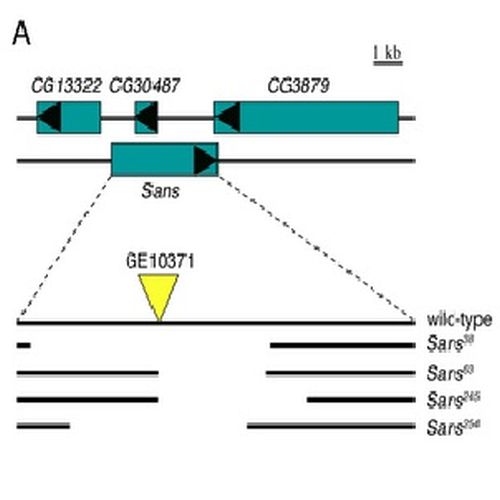Characterization of the Drosophila ortholog of the human Usher Syndrome type 1G protein sans.
The Usher syndrome (USH) is the most frequent deaf-blindness hereditary disease in humans. Deafness is attributed to the disorganization of stereocilia in the inner ear. USH1, the most severe subtype, is associated with mutations in genes encoding myosin VIIa, harmonin, cadherin 23, protocadherin 15, and sans. Myosin VIIa, harmonin, cadherin 23, and protocadherin 15 physically interact in vitro and localize to stereocilia tips in vivo, indicating that they form functional complexes. Sans, in contrast, localizes to vesicle-like structures beneath the apical membrane of stereocilia-displaying hair cells. How mutations in sans result in deafness and blindness is not well understood. Orthologs of myosin VIIa and protocadherin 15 have been identified in Drosophila melanogaster and their genetic analysis has identified essential roles in auditory perception and microvilli morphogenesis, respectively.

- PLoS ONE 2009 Mar 09;4(3):e4753
- 2009
- Developmental Biology
- 19270738
- PubMed
Enabled by:
